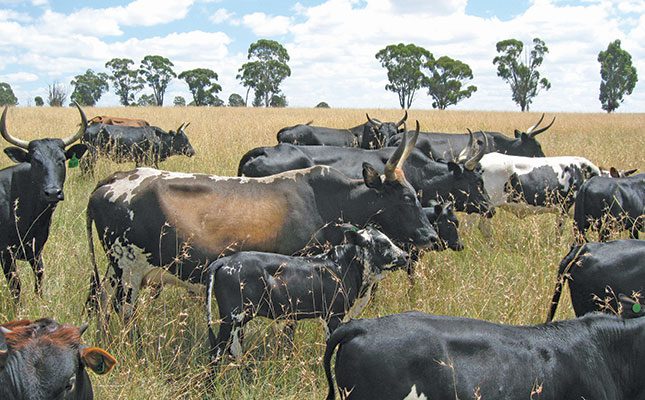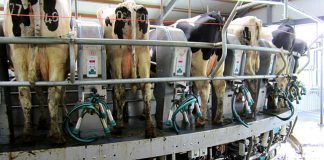
Photo: Wikimedia Commons
With the media often reporting alarming figures on the water use of farm animals, without putting the methods and context of the calculations into perspective, many consumers have the perception that meat consumption is harmful to the environment. However, it is important to consider the wider context of animal production under extensive conditions.
Figures quoted about the water footprint of farm animals are unrealistic. For example, it is claimed that the volume of water used in the production of beef is 15 500ℓ/kg of meat. The problem with these figures is that they are based on incorrect assumptions. The example below demonstrates this.
If 10mm of rain falls on 1ha, this will total 100kℓ (kilolitres). If 10mm of rain falls on a 3 000ha farm, the total will be 300 000kℓ. If the average rainfall is 450mm/year, the total amount of water that will fall on the farm is 135 million kilolitres.
If its carrying capacity is 6ha/ LSU, the farm can support 500 LSUs. This equates to 270 000kℓ of water per livestock unit per year. (An LSU is the equivalent of a 450kg ox that gains 500g/day.)
These are the type of calculations that are made to support the claim that 15 500ℓ of water are used to produce 1kg of meat.
The reality is that cattle use only a fraction of this water, and this brings us to the concepts of ‘green’ and ‘blue’ water. Green water is that which is absorbed by the soil and used by plants to grow; it cannot be used for anything else.
Blue water is that in dams, rivers and underground. This provides humans and animals with drinking water, and households, industries and mines with water for a variety of uses. It is estimated that the blue-water footprint of beef cattle in South Africa varies between 250ℓ and 450ℓ/kg of meat produced, depending on the production system and calving percentage.
Observations made by the Agricultural Research Council (ARC) showed that the average water intake of Bonsmara heifers was around 23ℓ/day, which increased to 56ℓ/day after calving, during the suckling of calves. Under feedlot conditions, the daily water intake varied between 6% and 9% of body weight, depending on the temperature.
Afrikaners and Ngunis measured
In the ARC water intake study, 13 young Afrikaner bulls and 15 young Nguni bulls were measured over a period of 28 days during the summer of 2020/21 using the GrowSafe system at ARC-Irene.
This is a Canadian system that measures feed intake and body weight in cattle. The system was acquired under the leadership of Prof Michiel Scholtz, specialist researcher at the ARC, who secured funding through the National Equipment Programme of the National Research Foundation.
The ARC’s Animal Production Institute has bought this high-tech feeding system as part of its efforts to promote climate-smart agriculture, and currently uses it to test the post-weaning performance of crossbred indigenous and exotic cattle.
Exposing emerging farmers to this level of agricultural technology and simultaneously updating them on the results of current research will help them to improve their farming techniques as well their financial stability. The ultimate aim is to boost beef productivity and food security.
Results
In the ARC-Irene study, feed intake, duration of feeding, amount of feed consumed per feeding, number of feedings and water intake per day, and other factors were all measured in real time.
The daily water intake (average for the animals in the pen) and weights per week for the Afrikaner bulls are indicated in Graph 1, and those for the Ngunis in Graph 2. Both breeds gained weight during the period of evaluation.
It is clear that the water intake of the Afrikaner is more stable than that of the Nguni. The weekly water intake of the Afrikaner varied between 7,45% and 9,35% of body weight, and that of the Nguni between 9,52% and 10,2%. This was surprising to note, as it is generally perceived that the Nguni is slightly more adapted to heat than the Afrikaner.
Email Georgette Pyoos at [email protected].













